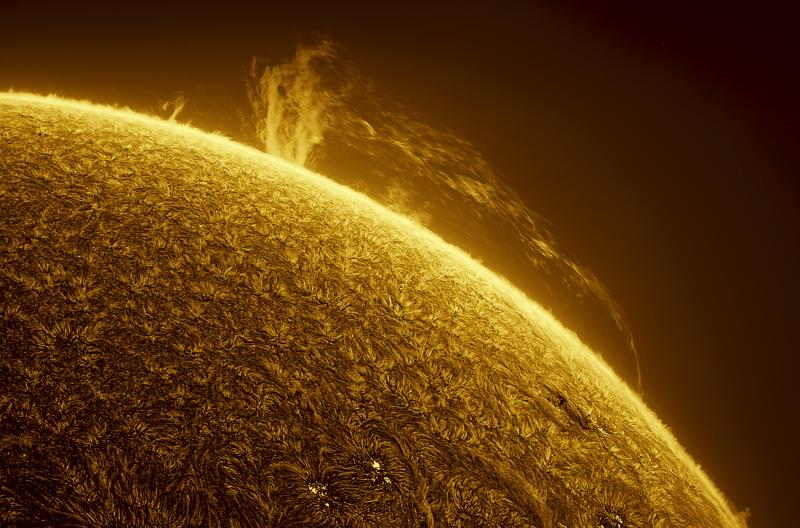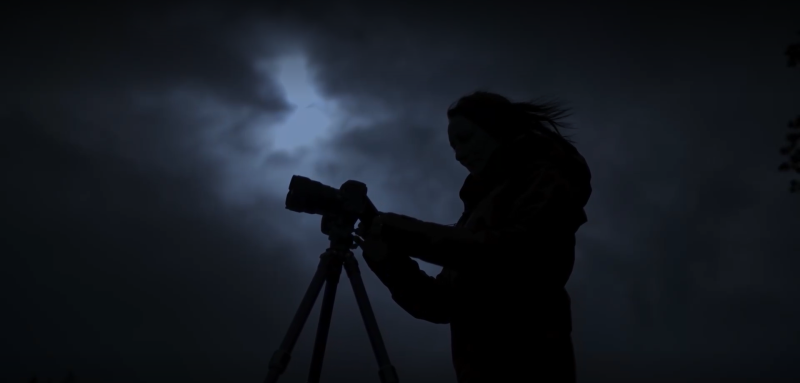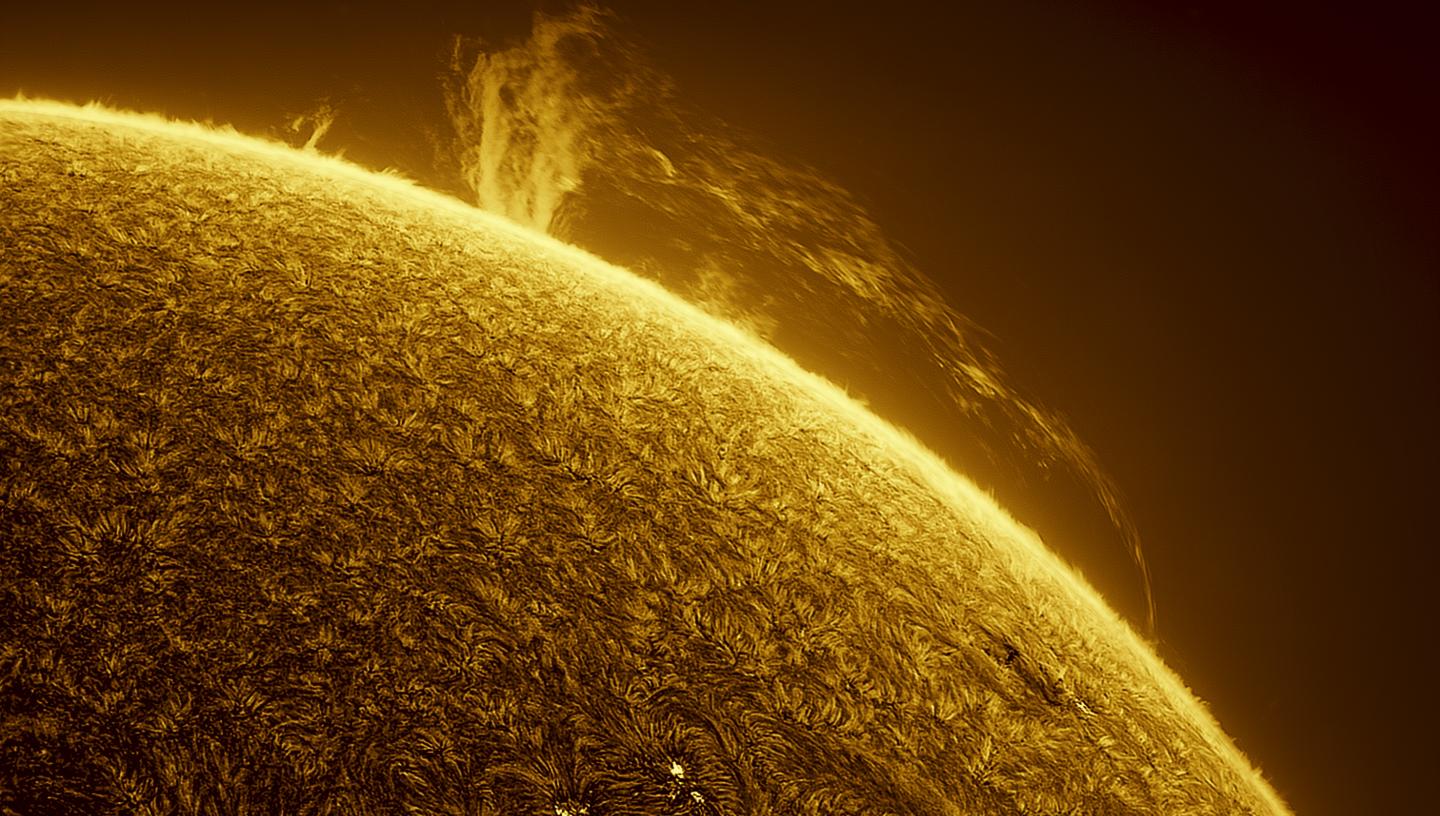
From star-studded skyscapes to magnified moons and streaming suns: the beauty of the cosmos is revealed in the shortlist for the Astronomy Photographer of the Year 2024 competition.
Now in its 16th year, Astronomy Photographer of the Year attracts thousands of entries annually from the best space photographers around the globe.
See some of the images on the shortlist below. The winners will be announced on Thursday 12 September - find out more about how to join the online ceremony here.
Never miss a shooting star
Sign up to our space newsletter for exclusive astronomy news, guides and events, and be among the first to see this year's Astronomy Photographer of the Year winners
A Night with the Valkyries by Jose Miguel Picon Chimelis
Hvalnesviti, Iceland
Jose says, "This capture is a panoramic view of the Eystrahorn Mountain. That night, I think, was one of the most amazing that I have experienced in my nighttime photography outings. There was a prediction of a KP7 storm [a strong geomagnetic storm that can cause aurorae and upset electrical power systems] and I was excited as to what I might see. What I couldn't have imagined was seeing these colours in the sky; it was a spectacle that was difficult to describe."
© Jose Miguel Picon Chimelis
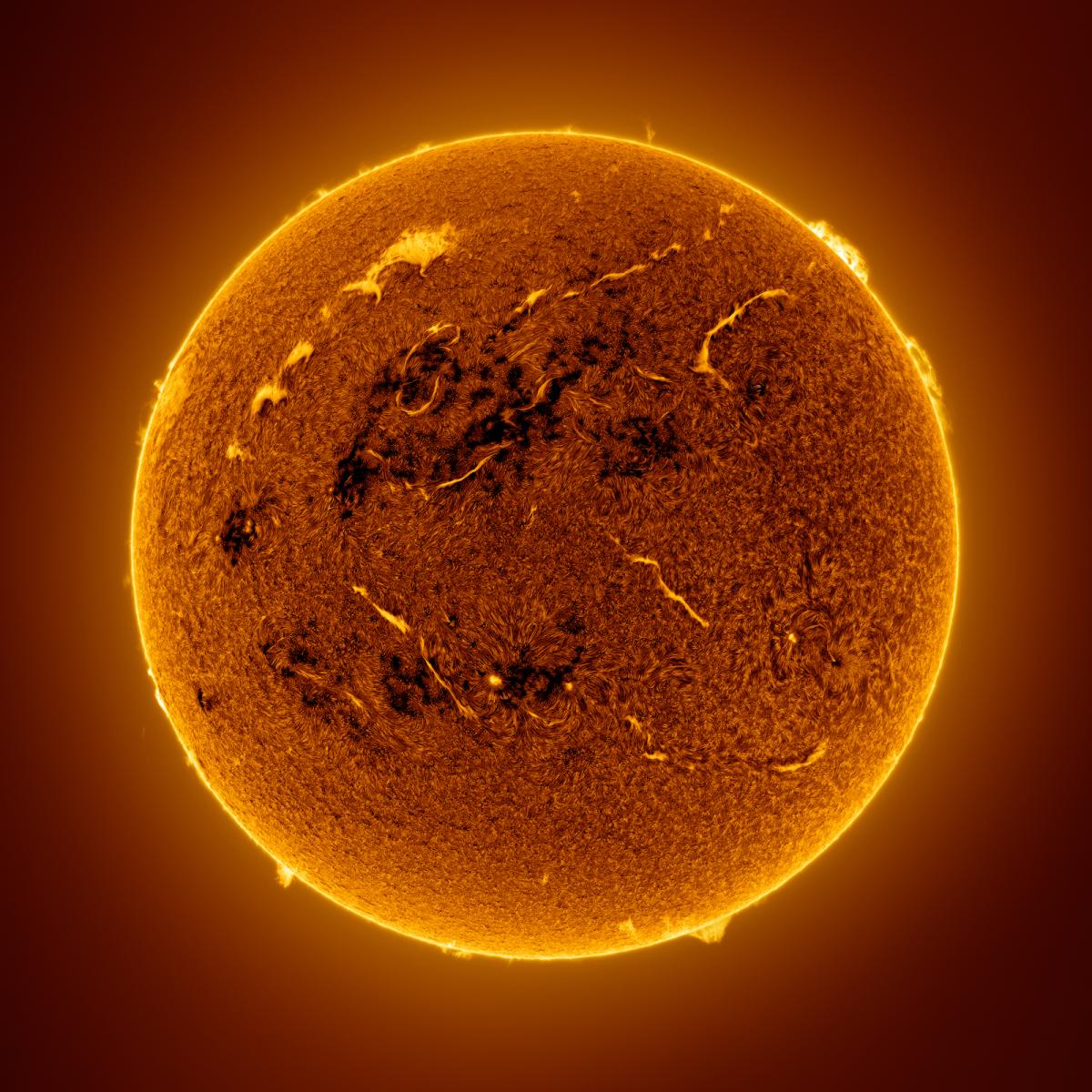
A Whale Sailing the Sun by Eduardo Schaberger Poupeau
Rafaela, Santa Fe, Argentina
"When using my telescope on this day, surprise and wonder took hold of me as I beheld an extraordinary filament, its shape reminiscent of an immense plasma whale traversing the solar surface, above the disc. It was truly astonishing to witness the singularity of this imposing figure. This plasma structure not only reveals solar dynamics but also underscores the fascinating ability of our minds to perceive recognizable shapes in abstract patterns, a phenomenon known as pareidolia," Eduardo explains.
"To capture this photo, I recorded two videos (one for the disc and another for the prominences), each consisting of 850 frames and stacked 100 of them using Autostakkert!, applying wavelets with ImPPG. Subsequently, in Photoshop, I composed the two images and added colour to them."
© Eduardo Schaberger Poupeau
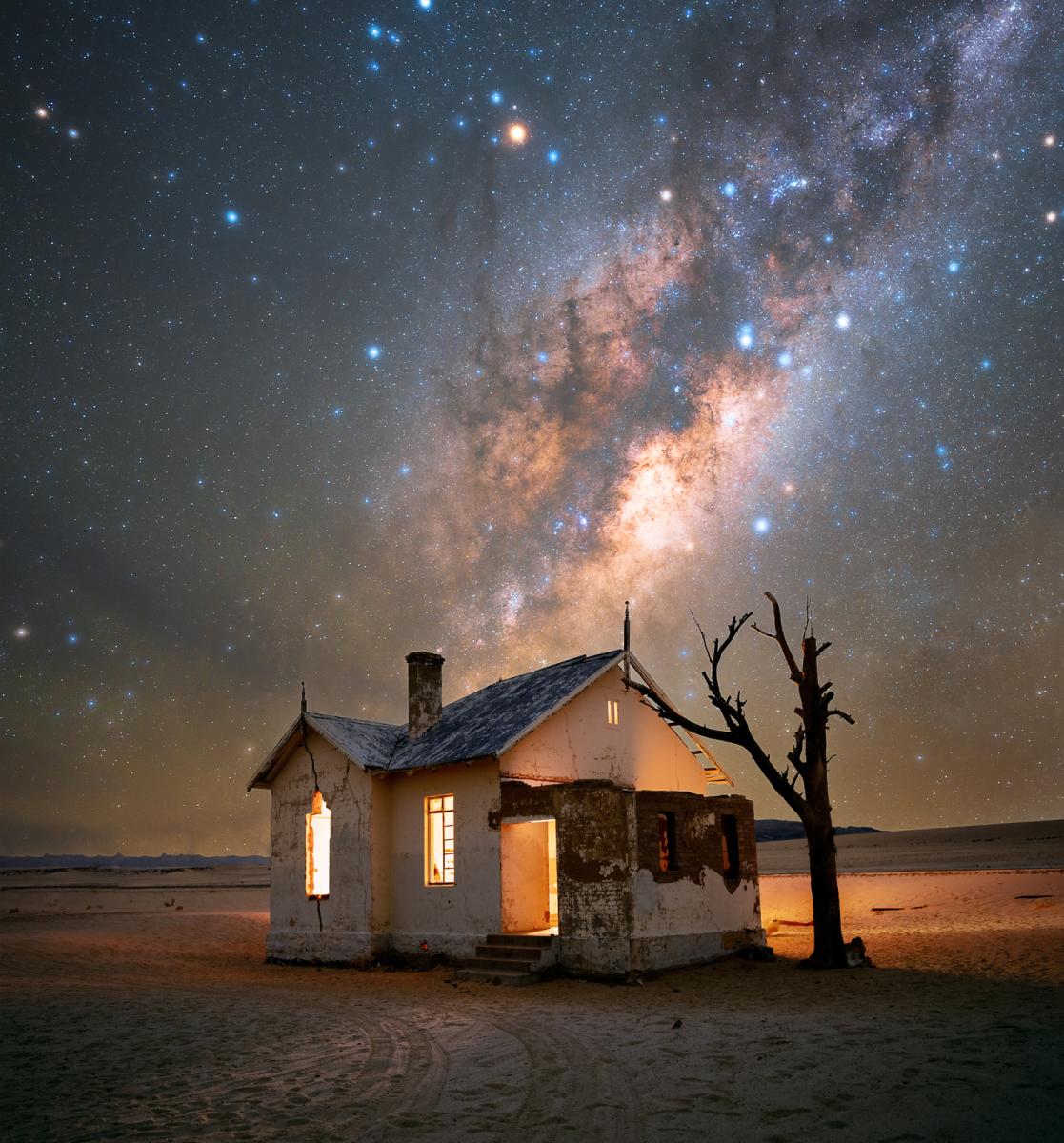
Abandoned House by Stefan Liebermann
Garub, Namibia
"In the middle of the Namib Desert you can find an abandoned house and, right above it, the Milky Way rises. I put some lights in the house, set up my star tracker and seized the opportunity. Through a veil of clouds, halos around the stars created a dream-like effect. The sky was captured with a star tracker to lower the ISO."
© Stefan Liebermann
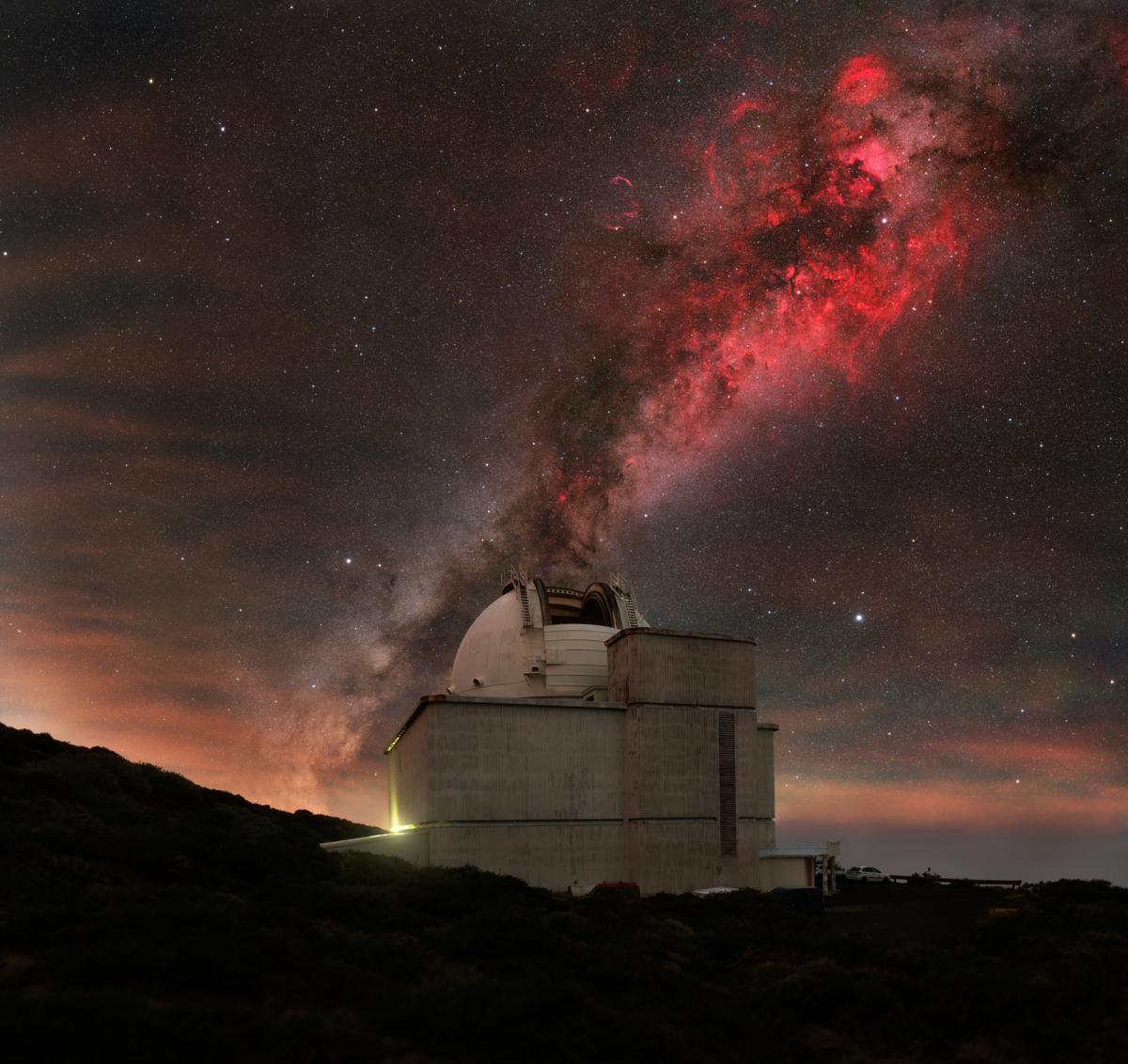
Observations at Night by Jakob Sahner
Roque de los Muchachos, La Palma, Canary Islands, Spain
"What you can see here is the Isaac Newton Telescope at the edge of the telescope facility on La Palma. It’s gigantic and sometimes makes scary noises at night. This composition has been a dream of mine for a very long time. Many astrophotographers focus only on the centre of the Milky Way, which of course looks beautiful, but it overshadows some other interesting areas of the galaxy," Jakob says.
"The Cygnus region with its bright and vibrant star-forming regions is one of my favourite parts of the night sky. You can see it in the top right of the image. This photograph is a panorama created with a 135mm lens. I love the special look and extreme depth it brings to the shot. It is very time-consuming, but the effort is worth it in my opinion."
© Jakob Sahner
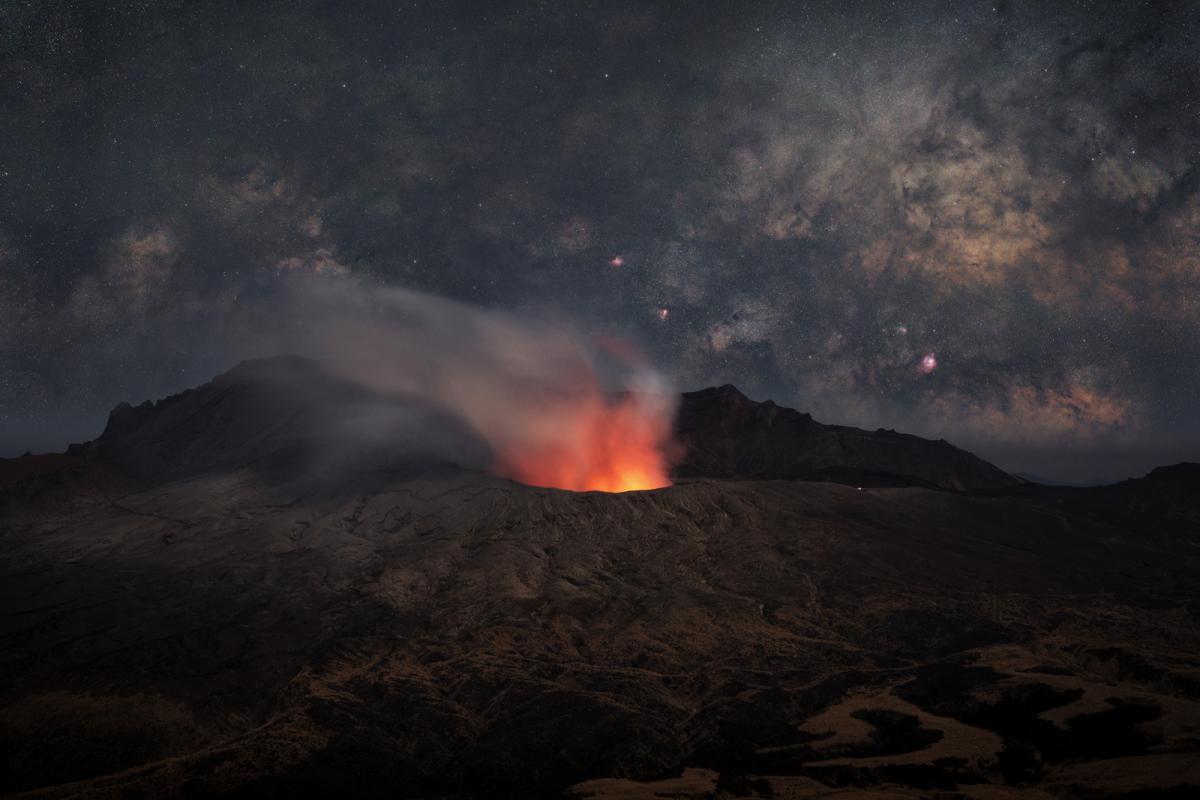
Earth and Milky Way Galaxy Show by Yoshiki Abe
Aso City, Kumamoto Prefecture, Japan
Yoshiki explains the location of his image: "Mount Aso in Kumamoto Prefecture is the collective name for the five peaks often called the ‘Five Mountains of Aso.’ The Nakadake peak has a volcanic crater that is still active. I had the good fortune of photographing the reflection that could only be seen at night when the volcano was active. I wanted this image to show how the Milky Way has been witness to the activity on Earth since prehistoric times. This is a composite photograph with the foreground and sky photographed separately but without moving the tripod. The Milky Way was stacked and enhanced in PixInsight and combined with the foreground in Photoshop."
© Yoshiki Abe

SNR G156.2+5.7, a Faint Supernova Remnant in Auriga by Bray Falls
Auberry, California, USA
"SNR G156.2+5.7 is a beautiful and faint supernova remnant (SNR) in the constellation Auriga. It is situated behind the dark clouds of the Taurus-Auriga molecular complex, which are very close to the Solar System. This means we have to look at this supernova remnant through the dust clouds in deep space. Luckily, there are enough breaks in the clouds to see an incredible structure. This SNR features an amazing H-alpha blow-out feature, which forms a delicate, laced bubble that encompasses the traditional SNR shockwave filaments," Bray explains.
© Bray Falls
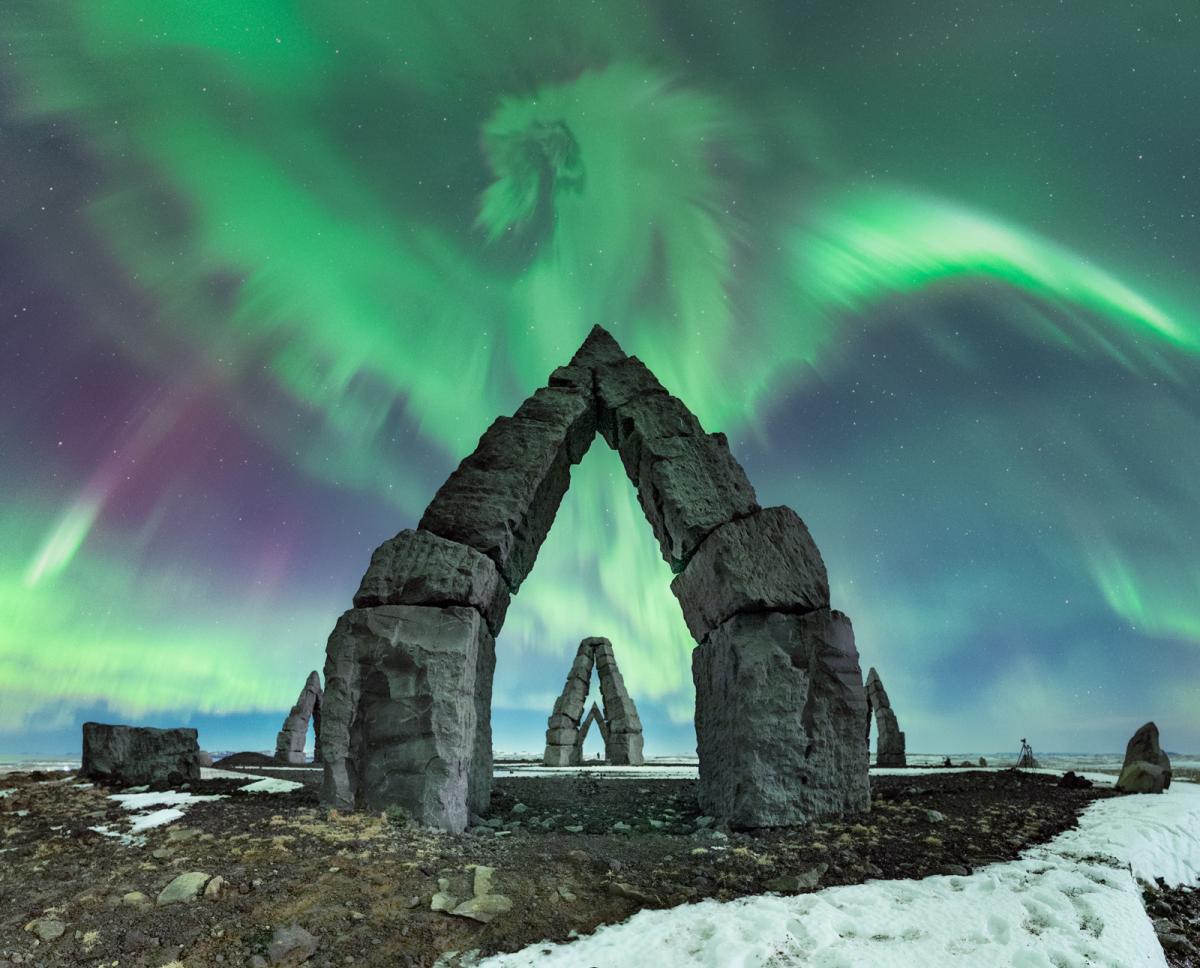
Arctic Dragon by Carina Letelier Baeza
Raufarhöfn, Iceland
"This aurora panorama, which looks like a big dragon over the rock pyramids, was the result of a geomagnetic storm (level G2) generated by a coronal mass ejection earlier that day. The result was intense red-greenish aurorae throughout the whole night. The location of the photo is the Arctic Henge, which has a rich cultural meaning for Icelanders, and was the only place in Iceland with clear skies that night," Carina says.
© Carina Letelier Baeza

The Galaxy Devourer by ShaRA (Shared Remote Astrophotography) Team
El Sauce Observatory, Río Hurtado, Chile
"Is this the cosmic sandworm of Arrakis, from Dune, or the terrifying Graboid from the film Tremors?" ShaRa group founder Alessandro Ravagnin asks.
"CG4 (Cometary Globule 4) is a complex of nebulosity and dust with a very peculiar shape, located in the southern constellation of Puppis. The ‘head’ of the galactic worm has dimensions of about 1.5 light years, while the offshoot that follows the head, and which is directed in the opposite direction with respect to the rest of the famous Vela supernova, has a length of about eight light years. This image is the result of the work of a team of astrophotographers; we joined forces to rent the Newtonian 500mm telescope from Chilescope service, processed the raw files, voted as a group for the best images and merged them in PixelMath."
© ShaRa group: Marcella Botti (Italy), Vikas Chander (India), Massimo Di Fusco (Italy), Aygen Erkaslan (Switzerland), Marco Firenzuoli (Italy), Vincenzo Fiore (Italy), Vincenzo Fermo (Italy), Antonio Grizzuti (Italy), Andrea Lorio (Italy), Vittorio Liberti (Italy), Rolando Ligustri (Italy), Donato Lioce (France), Antonio Loro (Italy), Giampaolo Michieletto (Italy), Gianluigi Pazienza (Italy), Christian Privitera (Italy), Alessandro Ravagnin (Italy), Francesco Tiano (Italy), Cristiano Trabuio (Italy), Egidio Vergani (Italy)

Serpentine by Paul Haworth
Snettisham Beach, King’s Lynn, Norfolk, UK
"At the New Moon in April 2023, I headed up to Snettisham Beach, famous for its vast tidal mudflats that attract migrating birds in staggering numbers," Paul recalls. "My foreground subject for the evening was the large, dilapidated jetty, which was built in the Second World War to allow gravel extracted from the nearby pits, destined to help build the concrete runways needed to support the American bombers stationed in the UK, to be moved by boat.
"I was accompanied all night by the incredible sound of the birds out on the flats – they never ceased and it was a fantastic soundtrack to the crystal-clear night. I named this image ‘Serpentine’ as I love the curved channel in the mudflat, mirroring the trailing stars, and the wonderful scaly texture of the mud cracks."
© Paul Haworth

The Blue Details of M45: The Pleiades by Sándor Biliczki
AstroCamp Nerpio, Albatece, Castilla-La Mancha, Spain
Sándor describes his route into astronomy photography: "I started astrophotography last February. Due to the light pollution and atmospheric conditions in Budapest, I rented a place for my equipment at AstroCamp in Spain and took these photographs during my stay. The Pleiades is very popular among astrophotographers, but there are so many tiny details to be discovered in it that, for me, it was a tremendous experience to process."
© Sándor Biliczki
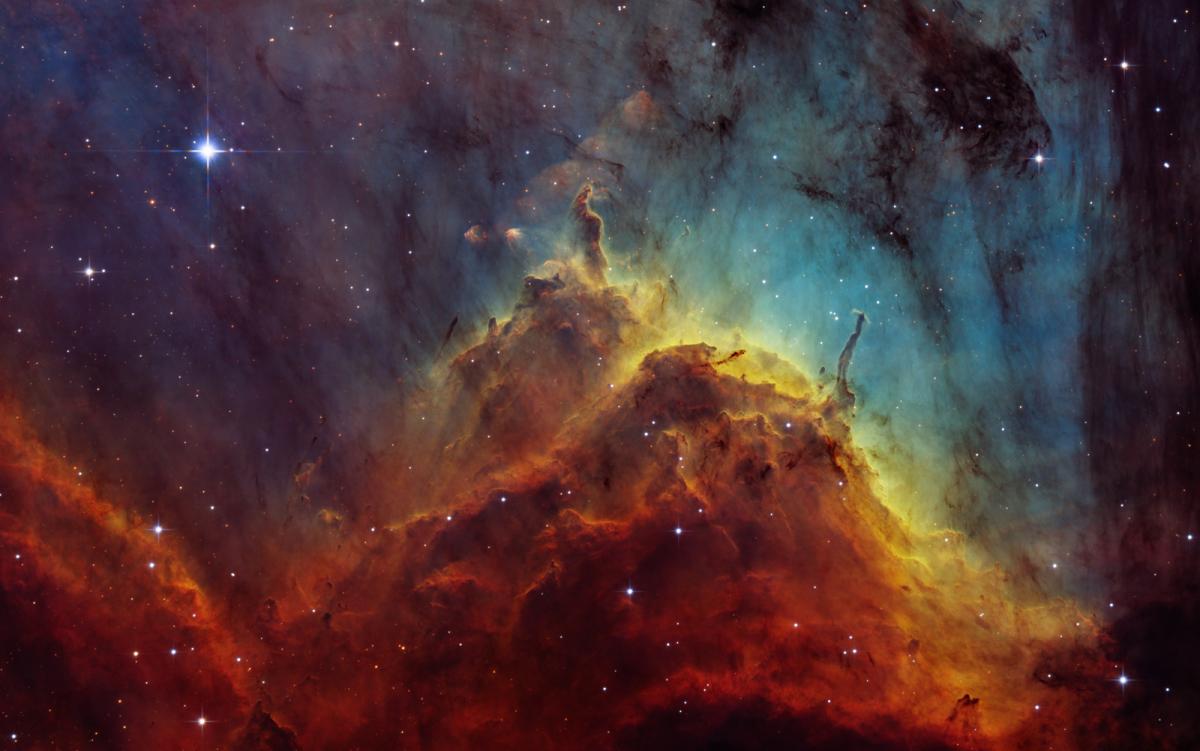
Misty Mountains by Bence Toth
Szödliget, Pest, Hungary
"This image shows a close look at IC 5070, the Pelican Nebula. I have used narrowband filters for image acquisition and created a colour image with the Hubble Palette method. The fine dust and gas structures really reminded me of mist on mountains hit by the rising Sun, hence the title," Bence says.
"During processing I really wanted to show this in an aesthetic way, along with the details of the dust itself. In the picture some HH objects [Herbig-Haro objects are bright regions or nebulosity around newborn stars] are also clearly visible, even with structural details."
© Bence Toth
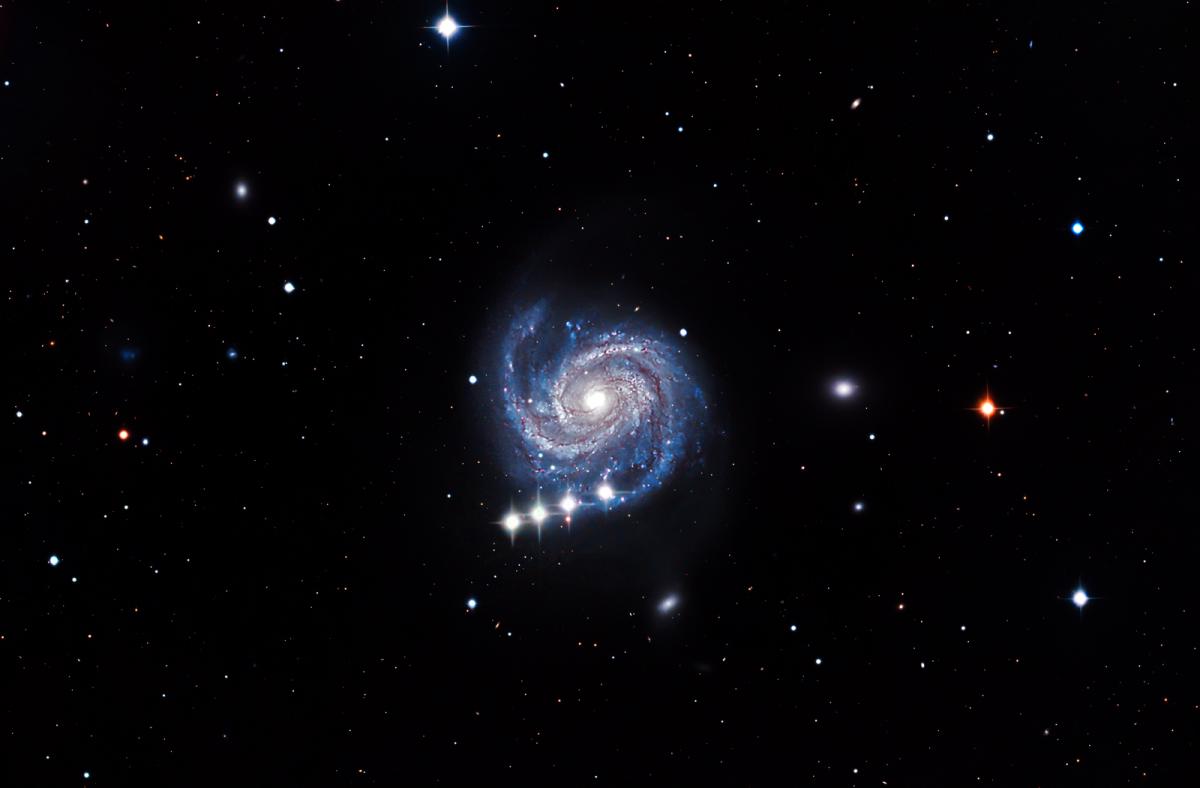
M100 (the Blowdryer Galaxy) and Ceres by Damon Mitchell Scotting
El Sauce Observatory, Río Hurtado, Chile
"Perspective counts for a lot in life, especially when observing deep space," Damon says. "On this rare and wonderful occasion, I was able to capture a dwarf planet, more than a billion times smaller than its galactic counterpart, transit beyond the galaxy’s spiralling arms. The planet Ceres shines brighter than the galaxy and zips across our night sky at an alarming pace. For this image I captured multiple long exposures over an eight-hour period to showcase the beauty of the Blowdryer galaxy and the relatively quick speed of Ceres."
© Damon Mitchell Scotting
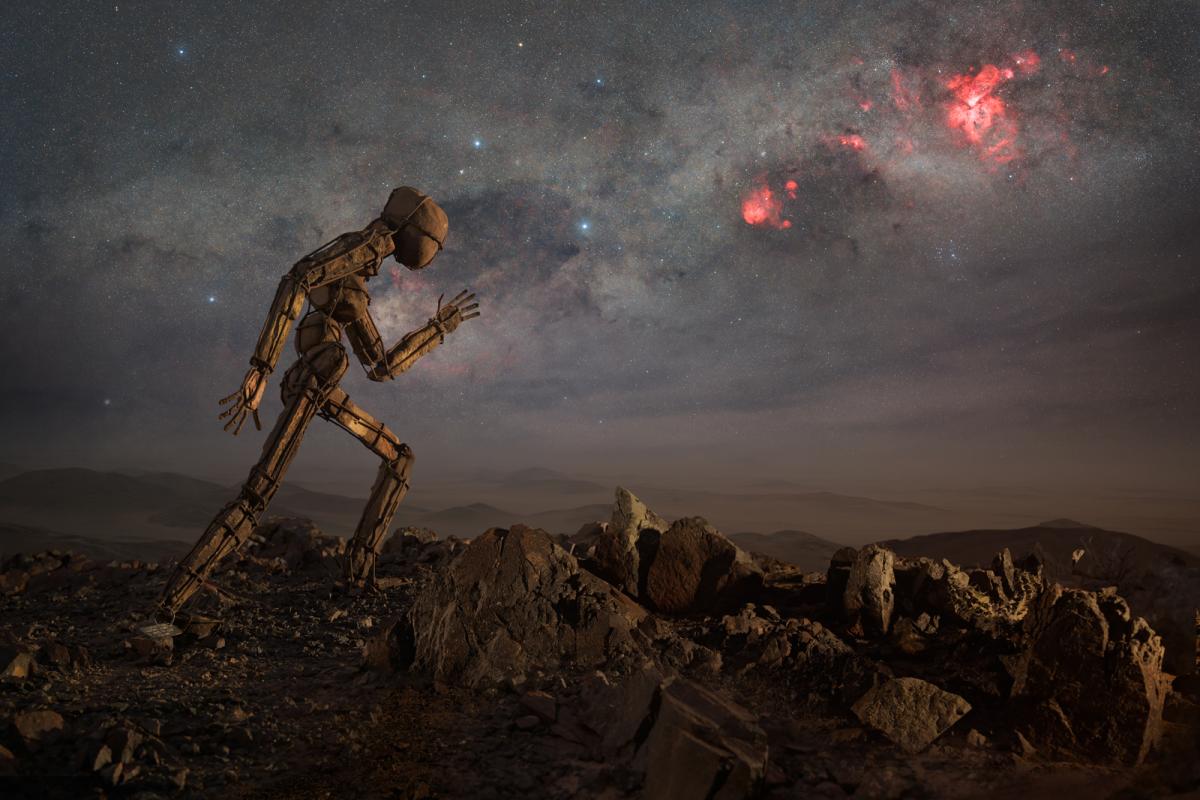
Run to Carina by Vikas Chander
Kunene Region, Namibia
"Deep in northwest Namibia, in a scorched desert where you can drive hundreds of kilometres without coming across another human, an artist is hard at work. Dotted all over the desert are numerous sculptures made of stone which blend seamlessly into the surroundings. Known as the ‘Lone Men of Kaokoland’ [as the region was formerly known], it is not clear who has put them there and where exactly they are located, but my quest to photograph all of them continues," Vikas says.
"I took a long exposure of the stone running man before light-painting and blending in Photoshop. The tripod was then moved for a clear view of the horizon for ease of blending. The Carina arm of the Milky Way was tracked and a stack of eight images was then blended with the foreground image with the clouds, haze and glow at the horizon to make a smooth transition between ground and sky."
© Vikas Chander

International Space Station Daytime Moon Transit by Kelvin Hennessy
Gold Coast, Queensland, Australia
Kelvin explains, "This image shows the International Space Station (ISS) transiting the 51 per cent-illuminated Moon. I used Ed Morana’s ISS Transit Prediction app to find a suitable transit path and confirmed this with Stellarium. Finding a suitable shooting location in a city was the most difficult part of the shoot. I used Google Earth and Google Street view to look for a suitable candidate with clear skies and parking along the very narrow transit corridor."
© Kelvin Hennessy
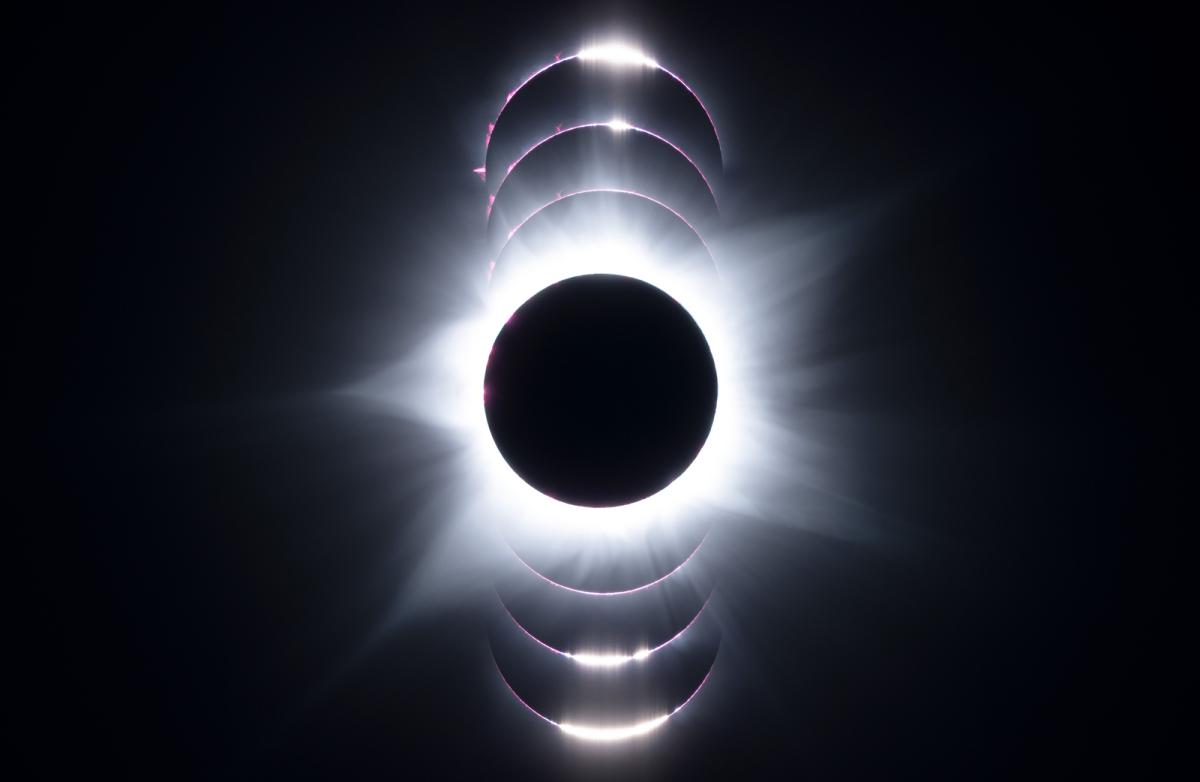
Total Solar Eclipse by Gwenaël Blanck
Exmouth, Western Australia, Australia
"A total solar eclipse is one of the most beautiful spectacles nature can offer. Everyone should experience it at least once in their lifetime. In April 2023 I went to Australia, for 62 seconds of totality. It seems short, but it was worth every penny and effort to get there. Pictures don’t do justice to this wonder," says Gwenaël.
"With this collage I wanted to show the beauty of the corona (which looks like a flower this close to the solar maximum), but also the pink chromosphere, the prominences and Baily’s beads [chinks of sunlight that shine through due to the Moon’s rugged landscape]. The image is processed with Photoshop. I superimposed seven pictures for the background and six others for the chromosphere and prominences."
© Gwenaël Blanck
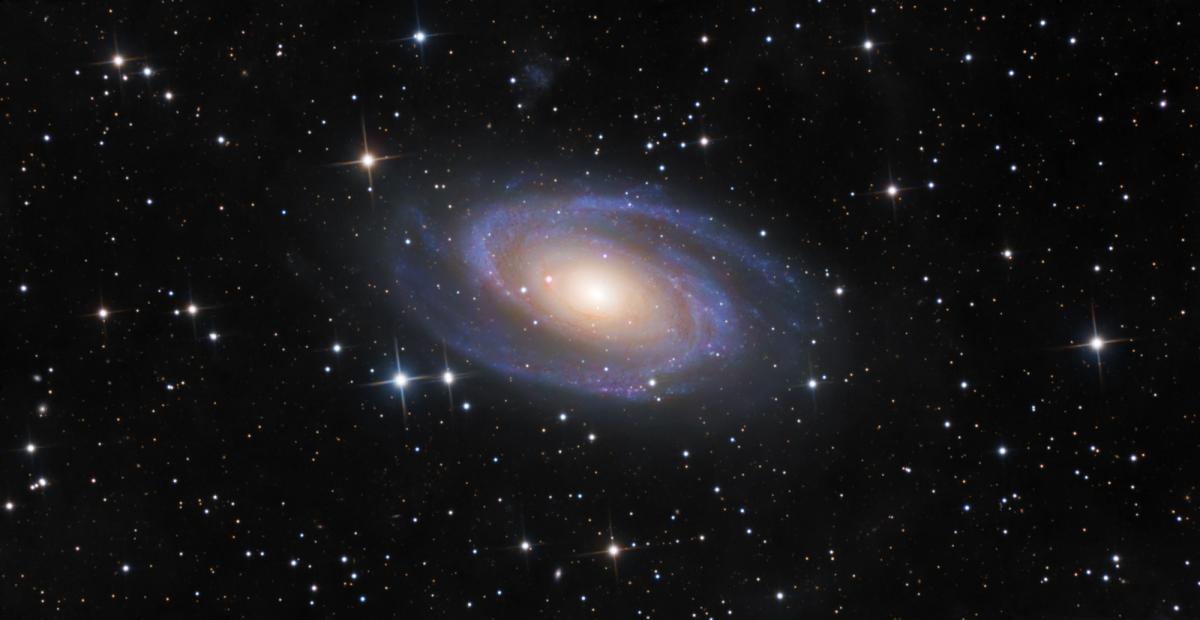
M81, a Grand Design Spiral Galaxy by Holden Aimar
Brownstown, Michigan, USA
"M81, also known as Bode’s Galaxy, is about 11.75 million light years away in the constellation Ursa Major. It is one of the brighter galaxies in the night sky. Very faintly in the image’s background, some Integrated Flux Nebula (IFN) can be seen. IFN is dust outside the Milky Way’s galactic plane that is illuminated only by the stars in the Milky Way," Holden says.
© Holden Aimar
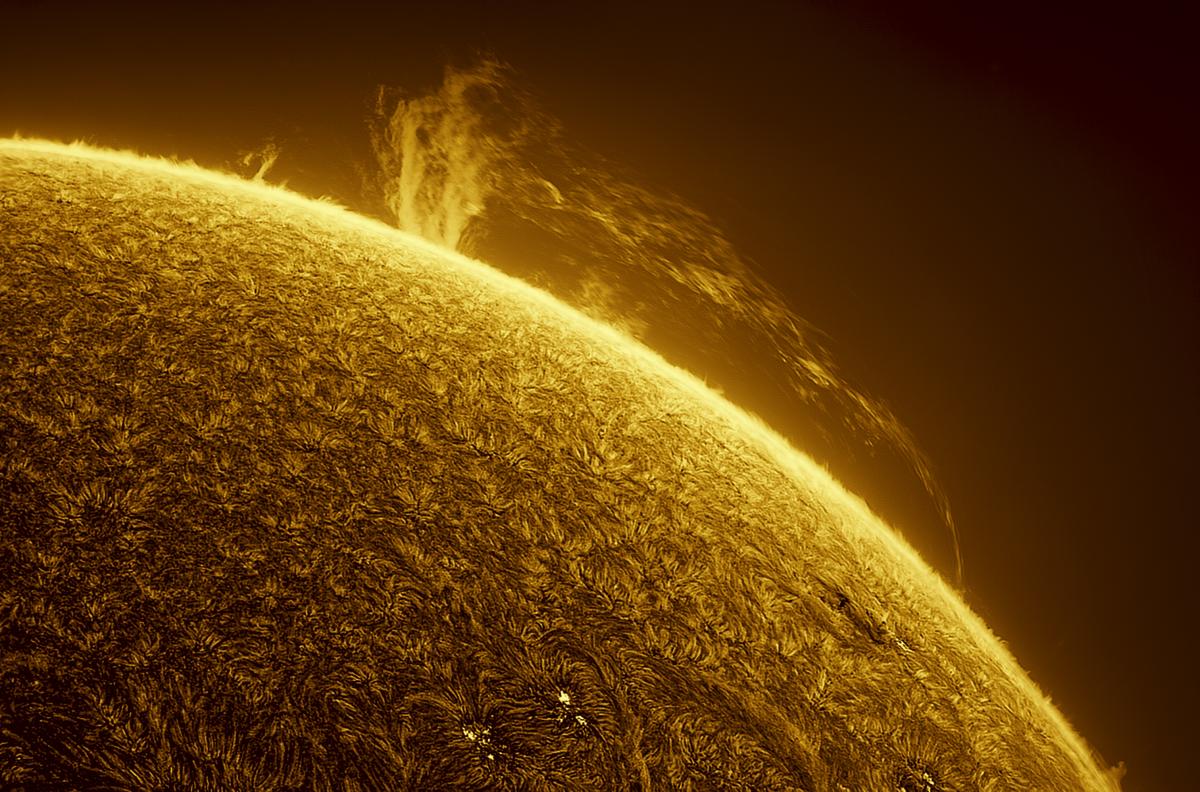
Gigantic Solar Prominence in Motion by Miguel Claro
Dark Sky Alqueva, Évora, Portugal
"This is a still image from a time-lapse sequence that features the chromosphere activity, revealing a gigantic prominence in motion where it’s possible to see a lot of interesting changes in its shape. This giant stretches around the Sun’s limb for thousands of kilometres and is several times larger than Earth. As comparison, its width is larger than the width of the rings of Saturn," says Miguel.
"We can also see a lot of fine spicules surrounding the solar disc and a fast-erupting prominence coming from a sunspot, while the chromosphere itself was showing a slower motion. Conditions were good, so I managed to make a time-lapse of about 248 images. The final result was a 4K high-resolution solar movie comprising around 1 hour and 20 minutes of photos. The one I selected to present here was taken at UTC 13:15."
© Miguel Claro
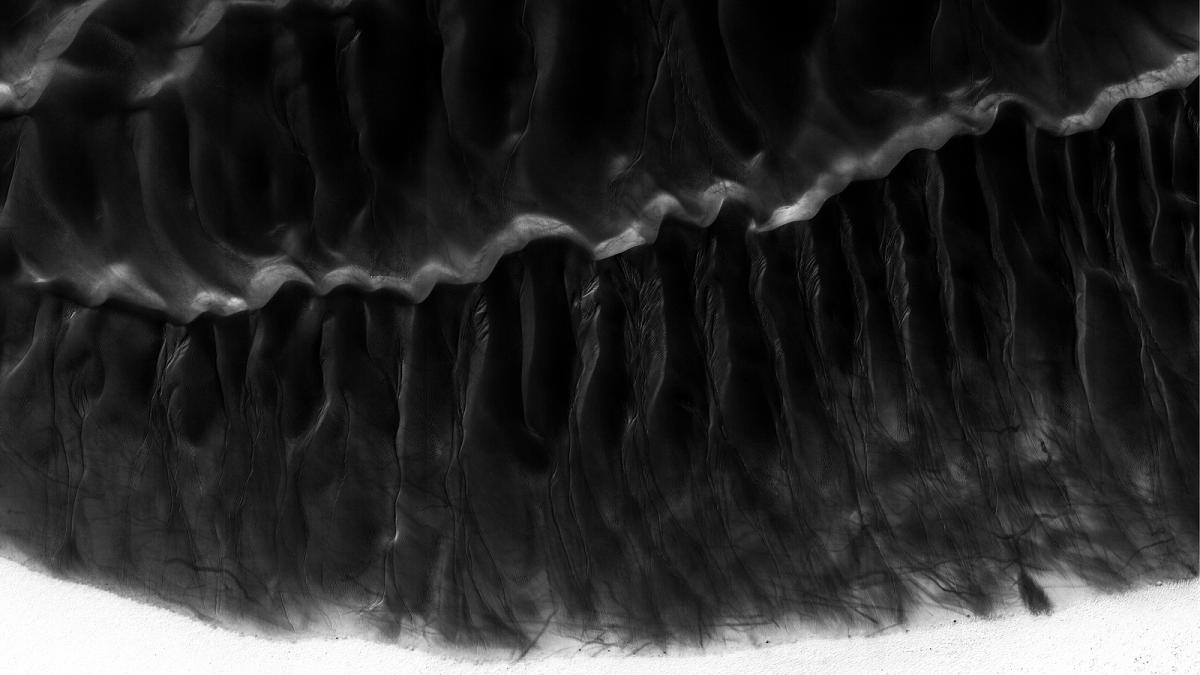
Martian Dementors by Leonardo Di Maggio
"I was working on a project with different images taken from the Mars Reconnaissance Orbiter (MRO) missions when I found this image that really stood out. By abstracting the image, the perspective is shifted and the Martian landscape transforms into something very spooky and atmospheric," Leonardo explains. "I cropped into a section of the image and tried to bring up the clarity, as well as the shadows, to give the impression of legs of living creatures, while attempting to keep the overall dark feeling of the photograph."
© Leonardo Di Maggio, data: NASA/JPL-Caltech/UArizona
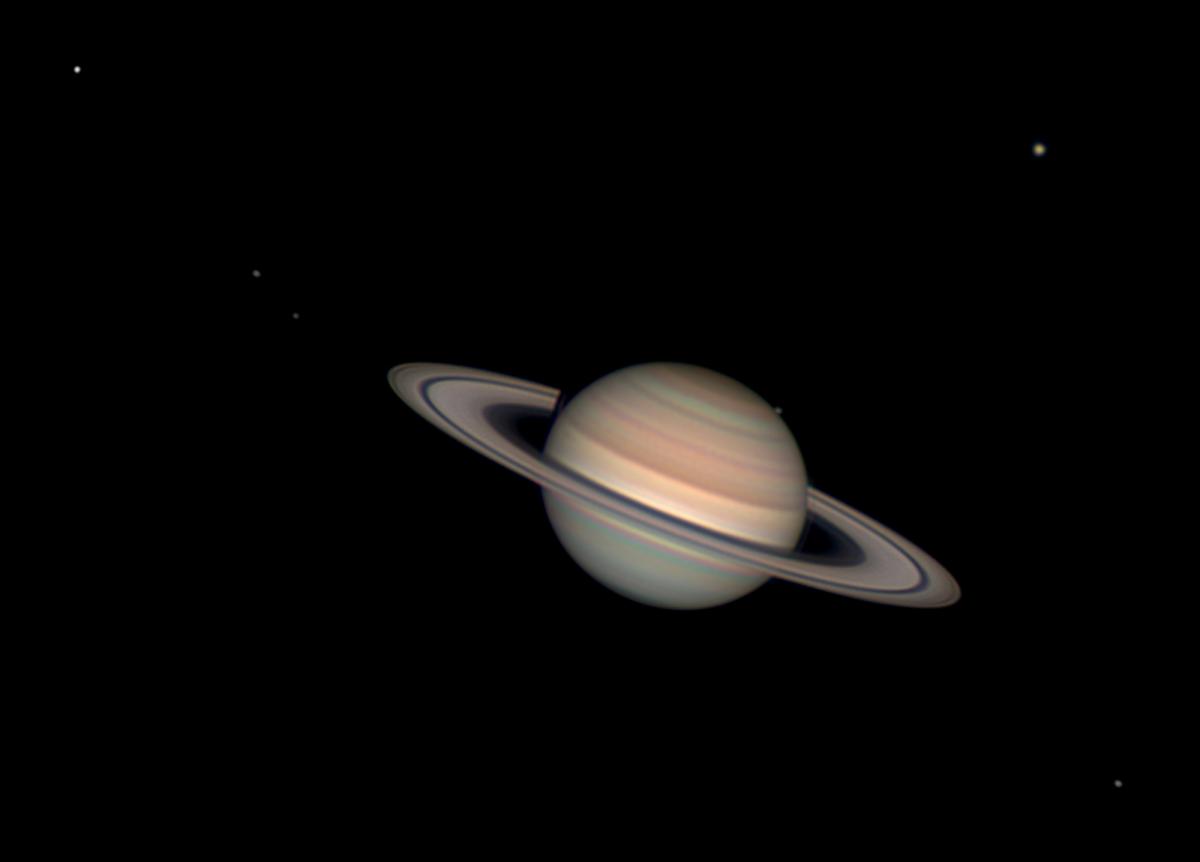
Saturn with Six Moons by Andy Casely
Blue Mountains, New South Wales, Australia
"Saturn’s decreasing ring tilt is helping the big orange moon Titan get closer to Saturn from our viewpoint than it has in over a decade," Andy says. "The usually distant Titan joined the moon family portrait this September. At the centre of the image Tethys is just about to disappear behind Saturn, while Rhea, Enceladus and Mimas are on the left and Dione is to the lower right. The planet’s shadow on the rings is prominent, as are the Cassini and Encke divisions."
© Andy Casely
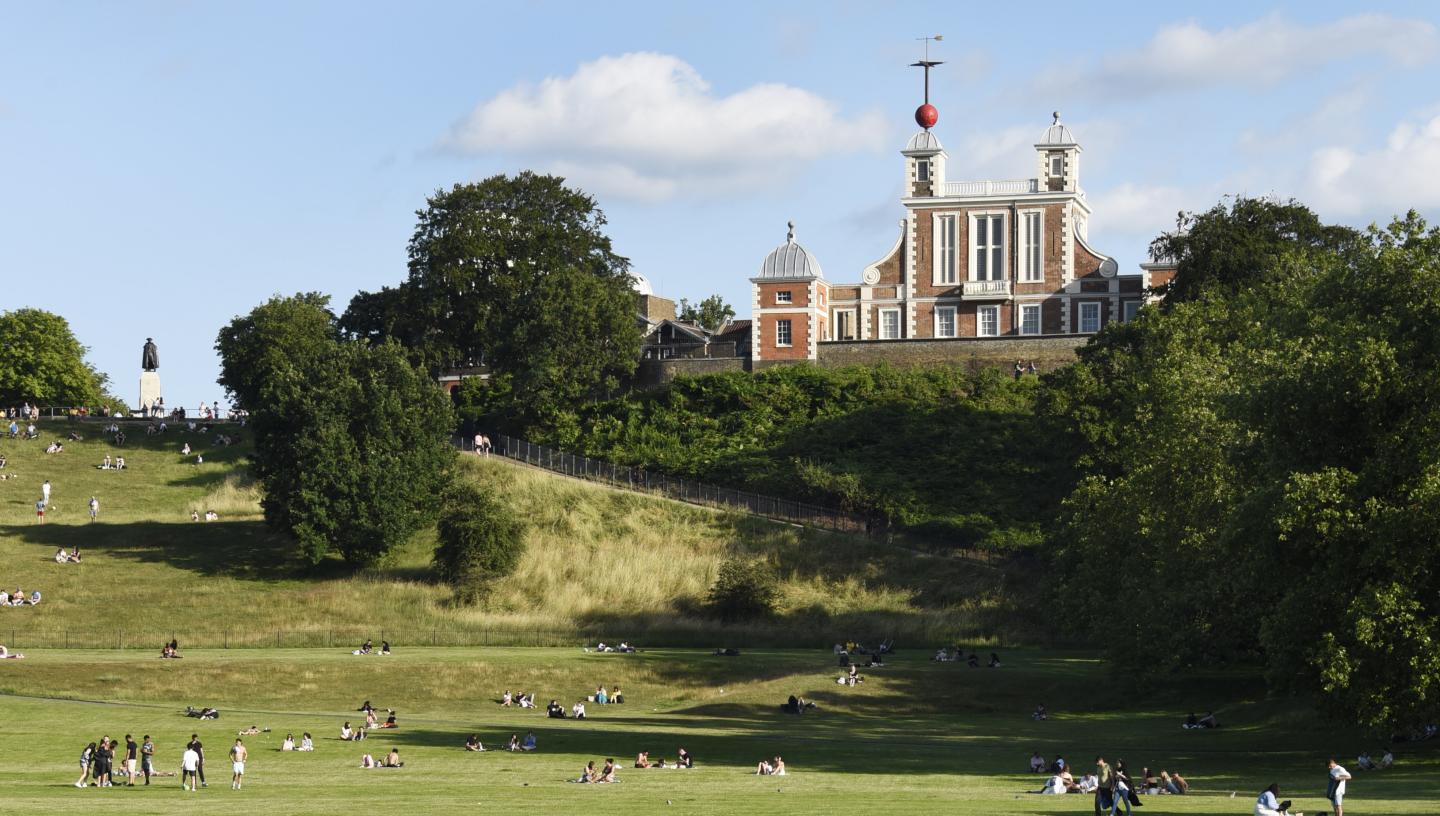
Visit the Royal Observatory Greenwich
Exhibition partners


Header image: Gigantic Solar Prominence in Motion © Miguel Claro

